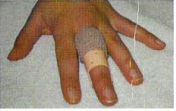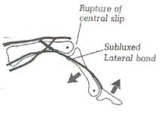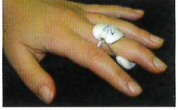What is involved in a finger dislocation?
It all begins with an idea.
A dislocation is an injury that results in the displacement of bone from its typical position leading to an unstable joint and causing soft tissue damage. The healing process of soft tissue involves the formation of scar tissue. The goal of therapy is to enhance the benefits of scar tissue stabilization while minimizing the impact of adhesions caused during scar tissue formation.
In terms of the proximal interphalangeal joint (PIP joint), dislocations may occur in 4 different directions and thus produce 4 different results. These results are: medial/lateral instability, volar plate disruption, and boutonniere deformities.
Medial/Lateral Instability
This dislocation is caused by a disruption of a collateral ligament. Treatment includes buddy taping, which allows for supported flexion and extension.
Volar Plate Disruption
This occurs when the volar plate is partially or fully torn or avulsed (detached/separated). Treatment includes splinting of the PIP joint in 30° flexion, gradually increasing to full extension/straightening of finger over 3 weeks, while allowing the PIP/DIP to continue to bend. Splinting is encouraged for up to 6 weeks.
Boutonniere Deformity
This occurs when the central slip of the extensor mechanism is avulsed (detached/separated) or ruptured from its insertion. This results in a loss of PIP extension. Treatment includes splinting the PIP joint in extension (bent position), maintaining the DIP joint range of motion, and decreasing pain and swelling.






